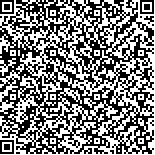| 引用本文: | 伍克煜,刘峰江,许浩,张浩天,王贝贝.合成生物学基因设计软件:iGEM设计综述[J].生物信息学,2020,18(1):8-15. |
| WU Keyu,LIU Fengjiang,XU Hao,ZHANG Haotian,WANG Beibei.Synthetic biology genetic design software: Review of iGEM software design[J].Chinese Journal of Bioinformatics,2020,18(1):8-15. |
|
| 摘要: |
| 随着基因回路规模的扩大,和应用范围的拓展,传统的合成基因回路的设计思路面临着新的挑战。新合成基因回路构建的试验周期长,试错成本大,单纯依靠经验进行设计构建,难以迅速得到满意的结果。iGEM中软件设计比赛旨在帮助合成生物学家,更高效地完成基因回路的设计与预测。为了更好地研究iGEM软件的设计与研究方向,寻找新的设计思路和理念,综述了最近几年iGEM软件队的项目,仔细总结了每一个项目的背景、目的,设计和应用。通过对比和总结,发现这几年的iGEM软件项目从功能上可以分为以下四类:①辅助设计;②资料共享;③合作交流;④数据分析。该综述可以为今后iGEM软件设计提供思考方向,也为合成生物学的发展提供新的思路。 |
| 关键词: 合成生物学 iGEM 软件设计 基因回路 生物砖 |
| DOI:10.12113/201905001 |
| 分类号:Q343.1 |
| 文献标识码:A |
| 基金项目:国家自然科学基金项目(No.6,6);中央高校基本科研业务经费项目(No.A03018023601045). |
|
| Synthetic biology genetic design software: Review of iGEM software design |
|
WU Keyu1, LIU Fengjiang1, XU Hao1, ZHANG Haotian1, WANG Beibei1,2
|
|
(1.School of Life Science and Technology, University of Electronic Science and Technology of China, Chengdu 611731,China;2.Center for Informational Biology, University of Electronic Science and Technology of China, Chengdu 611731, China)
|
| Abstract: |
| With the expansion of the gene circuits scale and its application, traditional approaches to design gene circuits for synthetic biology are faced with new challenges. The construction of the new synthetic genetic circuits requires a long experimental cycle with huge cost of trial and error, so it is difficult to get satisfying results in a short time by simply relying on experiments. The iGEM software design competition aims to make the design and prediction of genetic circuits more efficient and automatic. In order to understand the software design better and acquire new design ideas, the projects of iGEM software teams of recent years are summarized, where the background, purpose, design scheme, and application of the projects were investigated. After comparison and summarization, these projects could be classified into four categories according to their functions: ① auxiliary design, ② data sharing, ③ cooperation and communication, and ④ data analysis. The review could provide new ideas for the future iGEM software design, and the development of systematic genetic circuit design automation for synthetic biology. |
| Key words: Synthetic biology iGEM Software design Genetic circuits Biobricks |






